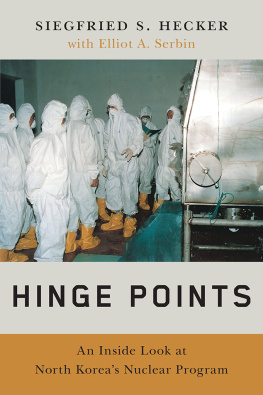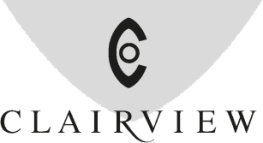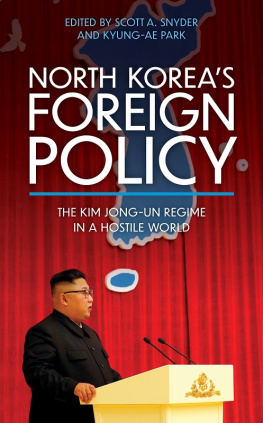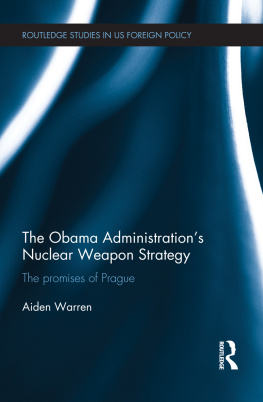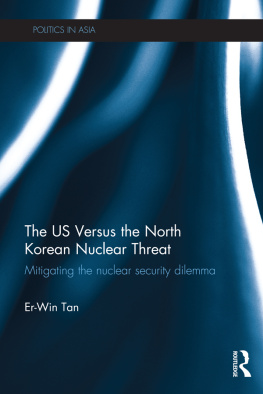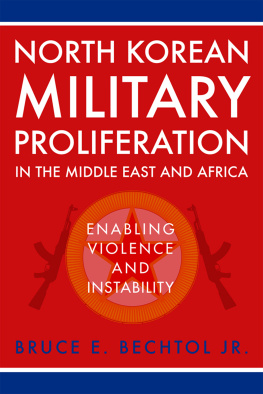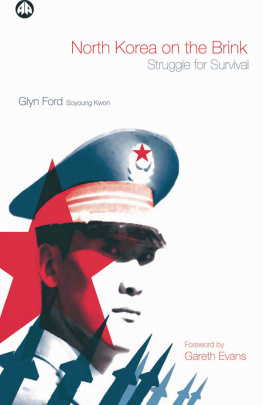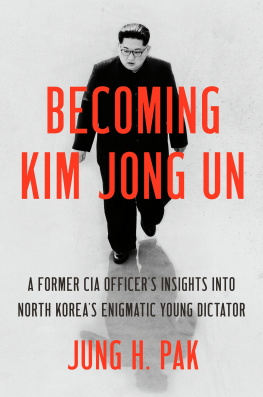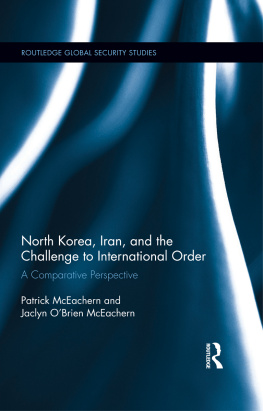HINGE POINTS
An Inside Look at North Koreas Nuclear Program
Siegfried S. Hecker
with Elliot A. Serbin
Stanford University Press
Stanford, California
Stanford University Press
Stanford, California
2023 by Siegfried S. Hecker. All rights reserved.
No part of this book may be reproduced or transmitted in any form or by any means, electronic or mechanical, including photocopying and recording, or in any information storage or retrieval system without the prior written permission of Stanford University Press.
Printed in the United States of America on acid-free, archival-quality paper
Library of Congress Cataloging-in-Publication Data
Names: Hecker, Siegfried S., author.
Title: Hinge points : an inside look at North Koreas nuclear program / Siegfried S. Hecker ; with Elliot A. Serbin.
Description: Stanford, California : Stanford University Press, [2023] | Includes bibliographical references and index.
Identifiers: LCCN 2022015242 (print) | LCCN 2022015243 (ebook) | ISBN 9781503634459 (cloth) | ISBN 9781503634473 (ebook)
Subjects: LCSH: Nuclear weaponsKorea (North) | Nuclear arms controlKorea (North) | Korea (North)Foreign relationsUnited States. | United StatesForeign relationsKorea (North)
Classification: LCC UA853.K7 H43 2023 (print) | LCC UA853.K7 (ebook) | DDC 355/.03355193dc23/eng/20220819
LC record available at https://lccn.loc.gov/2022015242
LC ebook record available at https://lccn.loc.gov/2022015243
Cover design: David Drummond
Cover photograph provided by the author
In memory of Professor John Wilson Lewis, whose boundless energy and dedication to a peaceful and prosperous Korean Peninsula inspired my North Korea work and this book
Contents
Preface
Would you like to see our product? asked Dr. Ri Hong Sop, director of North Koreas Yongbyon Nuclear Scientific Research Center. He peered at me expectantly from across a table in a small, nondescript conference room. We were inside North Koreas Radiochemical Laboratory, a massive complex where the North had allegedly extracted the bomb fuel for its nascent nuclear weapons program. You mean the plutonium? I replied cautiously, somewhat taken aback by the question. Well, yes, Ri replied and motioned to a colleague in a white lab coat who promptly left the room to retrieve the material. Within minutes, I was holding a nearly half-pound piece of funnel-shaped plutonium in my hands in a sealed glass jar.
This event was the crowning moment of my first and most improbable visit to North Korea in January 2004. It was nearly forty years after I had first held plutonium in my gloved hands as a summer student at the Los Alamos laboratory in New Mexico, the birthplace of the nuclear bomb. It was not so much the presence of plutonium that surprised mealthough bringing it into a conference room was unusualbut rather that the North Koreans would show their plutonium to me, the former director of the Los Alamos lab. Perhaps even more surprising, why would their nuclear specialists give me such a revealing tour of their facilities? As I discovered, they were eager to show the outside world that their nuclear facilities were operating and what they had accomplished. Although I was visiting with Stanford University Professor John W. Lewis in a nongovernmental, unofficial (typically called Track 2) capacity, North Korean officials viewed my association with Los Alamos as a valuable conduit to the U.S. government.
I knew my way around nuclear facilities and nuclear weapons, having worked at Los Alamos for several decades, including serving for nearly twelve years as the laboratorys fifth director. I had visited the nuclear weapons facilities of Russia, China, the United Kingdom, and France. Although my expertise was primarily in the technical domain, I was no stranger to political and diplomatic issues, having worked closely with UK and French colleagues to develop cooperative programs to keep the Soviets at bay during the Cold War. As the Soviet Union disintegrated, I worked with Russia and several other former Soviet states to help them mitigate the nuclear security and safety challenges resulting from the Soviet collapse. I had also worked with Chinas nuclear complex to assist its nuclear specialists in protecting and safeguarding their nuclear materials, and later in joining forces to help prevent nuclear terrorism. I had also just begun to take a closer look at the IndiaPakistan conflict, an antagonistic relationship for over fifty years that had risen to alarming levels when both countries declared themselves nuclear powers after conducting nuclear tests in 1998. North Korea was not on my horizon. I was not keen to visit.
What I saw and experienced during that first visit shattered my preconceived notions about the Democratic Peoples Republic of Korea (DPRK). How could a country that ranks in the bottom 10 percent of the worlds economiesin which hundreds of thousands of its citizens starved to death in the 1990spossibly muster the means to build the bomb? And now, why did this country, generally viewed as the equivalent of an astrophysical black hole from which nothing can escape, open its main nuclear complex to me and allow its nuclear professionals to brief me on the status and plans for that complex?
Most importantly, the visit alarmed me. I thought about how the George W. Bush administration had failed to anticipate the technical consequences and ensuing nuclear security risks of its political decision to walk away from a diplomatic agreement that had halted activities at the nuclear complex for eight years. I reported my findings at a congressional hearing for what marked the beginning of a nearly two-decade endeavor to better assess North Koreas nuclear program and mitigate the risk it posed to our Northeast Asian allies, South Korea and Japan, and U.S. assets in the region and at home. This journey took me back to North Korea each of the next six years. Each trip brought more information about the nature of the nuclear program, the personalities of my North Korean interlocutors, and the inner workings of their bureaucracy. The surprises never stopped coming.
Since my last visit in November 2010, North Koreas nuclear facilities have been off limits to all outsiders. I watched from afar as the North showed off one nuclear advance after another. I continued to update my technical analysis, followed political developments closely, and provided advice to our government and to allies. I was frustrated by how successive U.S. administrations were not able to prevent a country with such a weak hand from becoming one of fewer than ten countries in the world to possess a nuclear arsenal, and one of only three that might target the United States. My analysis of how this happened, what could have been done differently, and the lessons learned for future administrations are the subject of Hinge Points.

Introduction
Mount Mantap was never the tallest peak in North Koreas rugged Hamgyong range. As day broke on September 3, 2017, it was about to become even shorter. Throughout the morning, North Korean scientists and technicians busied themselves at the base of one of Mantaps slopes preparing for what they hoped would be a watershed moment in the development of their countrys nuclear program. During the last weeks of August, they had readied diagnostic instrumentation, fortified construction efforts, and assembled and emplaced a nuclear device within the tunnels that burrowed deep into the mountain, which had already been shaken by five previous nuclear tests.the mountain, andunexpectedlydropping Mantaps 2,205-meter peak by half a meter and bulging it out sideways about 3.5 meters.

